Founded in Perak 104 yrs ago, this butchery has grown to 7 outlets & a ready-to-cook line
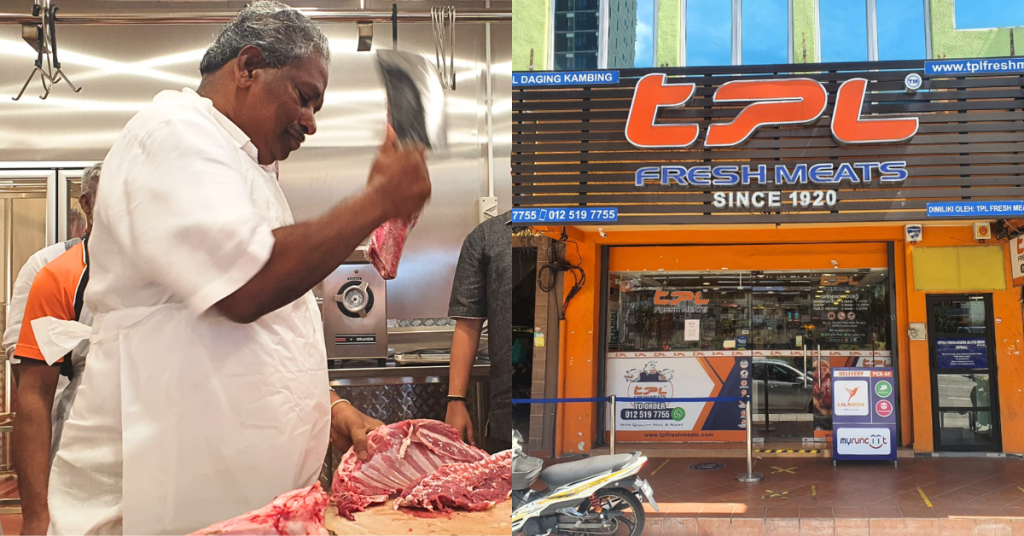
If you find yourself driving along Jalan Bangsar, you might see a signage emblazoned with orange letters spelling “TPL”. Look a little closer, and you’ll notice the tagline underneath that reads “since 1920”.
Indeed, TPL Fresh Meats is a brand with more than 100 years of history, as confirmed by Kamlanathan Arumugam Pillai (Kamal), TPL’s Director of Marketing.
As one of the fourth-generation leaders of the business, he hails from Teluk Intan, just like TPL.
Here’s how the meat business grew from a humble shop in Perak to a chain with outlets across the country.
A century-old brand
As promised by the signage, the story of TPL began in the year 1920, over 100 years ago.

TPL started off as a butcher shop at a Teluk Intan wet market, established by Kamal’s great-grandfather, TS Pichai Pillai. He himself hailed from Nibong Tebal in Penang, but moved to start his butcher business.
Originally, as a butchery, the shop sourced its meat from farmers, acting as a sort of distributor in the supply chain.
But when the shop was passed down to his son, TP Loganathan Pillai, they started rearing goats to be sold at the wet market instead of buying from other farmers.
“My grandfather had 10 children,” Kamal shared. “Having a tough time supporting the family singlehandedly, his two sons, who are my uncle and father, decided to join to give him a hand in the business.”
Later, the youngest son also joined the business. With the third generation at the helm, the TPL group began to really blossom.
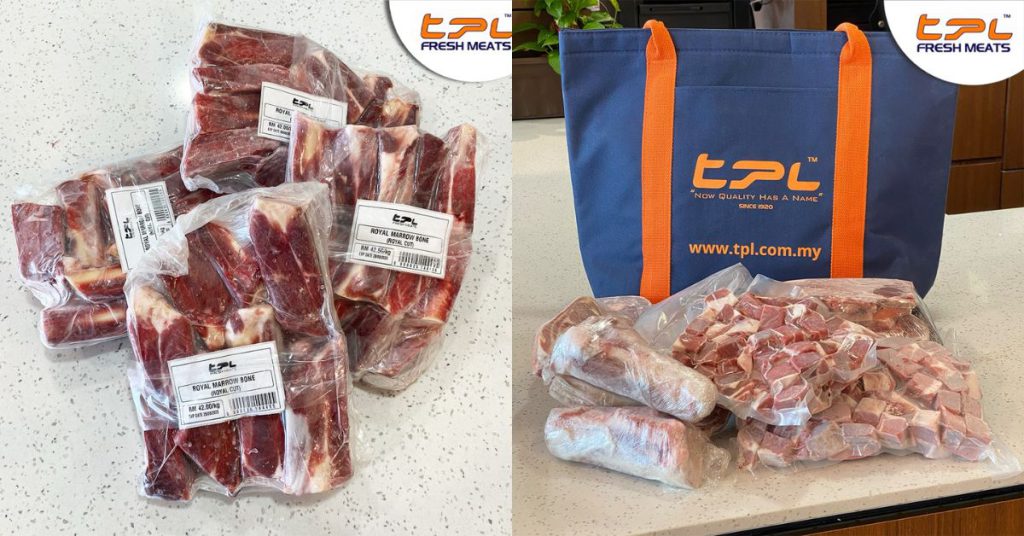
From the late 1980s, they began importing live animals directly from Australia, honing in on the supply side of the business. Some notable businesses that they supply to include Kanna Curry House, The Olive Tree Group, Ratha’s, and more.
But then, they realised that not enough end consumers could get their hands on the fresh goat meat they wanted.
With that, the first TPL concept store was opened in Klang in 2006.
From supply to retail
Throughout the years, the family kept expanding. After opening an outlet in Klang, they returned to TPL’s birthplace of Teluk Intan to establish a store in 2007.
From there, they opened outlets in Hutan Melintang, Bangsar, Ipoh, Penang, and Seremban. The seven outlets are all owned and operated by TPL.
Keeping up with the supply for the growing retail front is TPL’s own farms. The business has two farms, one in Bidor, Perak, and another in Kluang, Johor. To cater to all Malaysians, the meats are halal-certified, and slaughtered in government abattoirs.
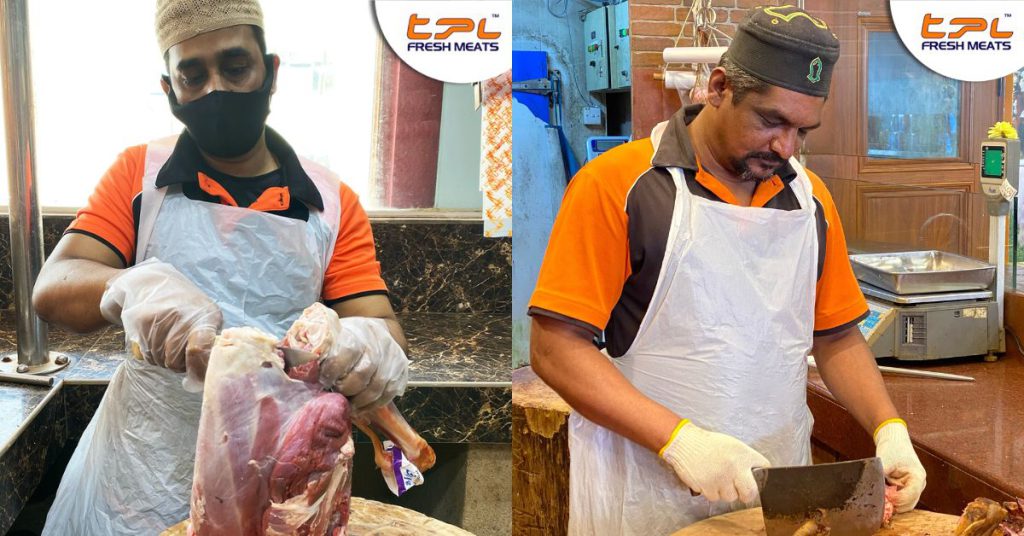
“We are the sole operator at the Shah Alam Abattoir for the goats and lamb section,” Kamal shared. “Majority of our stores are delivered daily with a fresh supply of meat.”
TPL also has its own cold-chain logistics for delivery, ensuring that everything is kept fresh and of good quality.
This quality is something Kamal believes makes TPL stand out amongst other butcher shops. Beyond that, he also highlights their professional cuts and services, as well as their hygiene and proper handling of the meat.
Aside from growth, many things have changed since 1920, with the biggest one being their use of technology.
Understanding the importance of continual advancements, the team leverages social media marketing and ecommerce to stay relevant.
Diversified offerings
On the topic of ecommerce, TPL’s online shop lists not only an array of fresh raw meat, but also ready-to-cook offerings under a brand called TPL Gourmet Butchers.
Kamal explained that TPL Gourmet Butchers was started in October 2022 to offer customers a new range of products. Items under this brand include ready-to-cook patties, meatballs, satays, sausages, and more.
All these products are made in-house by TPL at their processing plant in Kampung Subang, Shah Alam.
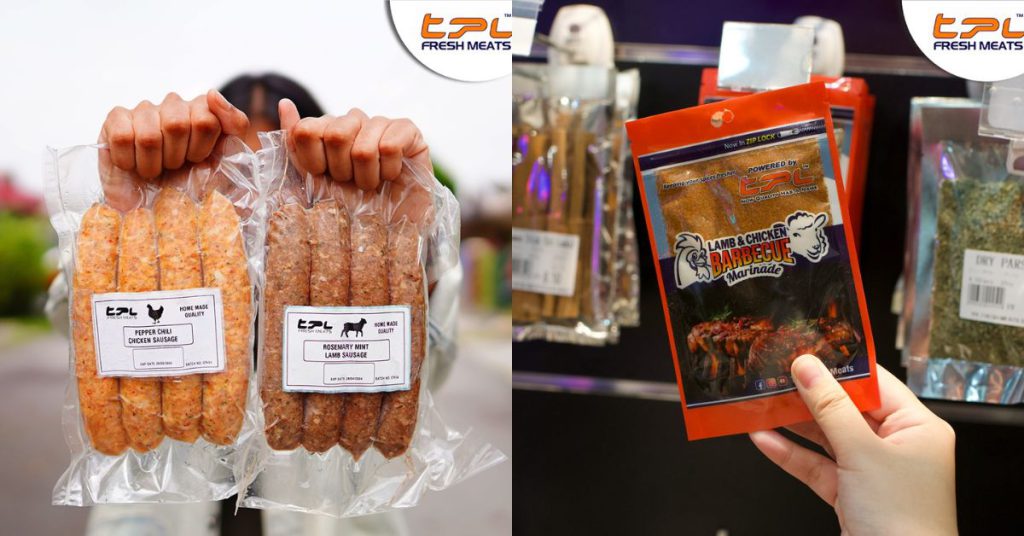
“We decided to go into this vertical because there was a demand for these kinds of products from our customers,” Kamal said. “And when we gave our meat to be made OEM, it was not the quality we wanted. So, we decided to make them ourselves.”
With the improved quality, he said that these value-added products make the business more attractive, and also generate better margins.
“It is not comparable apple to apple, which was the problem with the raw meat,” he said about the manufactured meat industry. “There are too many emerging new players in the market wanting to sell raw meat.”
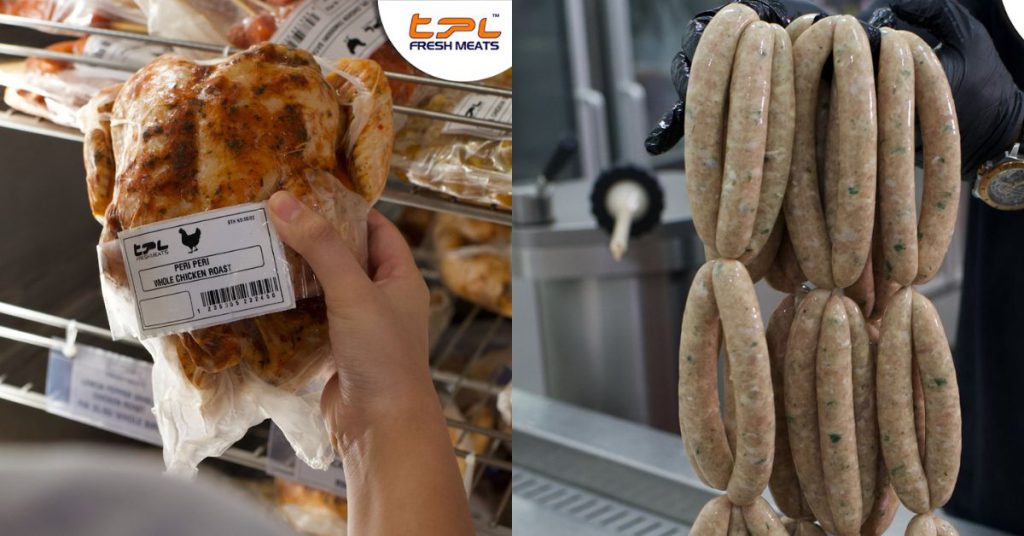
Beyond ready-to-cook foods, the business is also delving into the F&B sector. Currently, this vertical is still in the R&D process.
“We want to start selling food and we were testing the depth of the water by selling them at our TPL Bangsar store,” Kamal said.
“We got a good response from our customers, and hopefully by this year we will open our first restaurant which will be a totally new concept than ordinary restaurants.”
Continuing the legacy
This expansion will be an exciting one for the team as it may open them up to a new demographic of customers—foodies.
For now, Kamal said their main audience is households that cook, including halal customers and Indian Hindu customers who go to TPL as they do not sell beef.
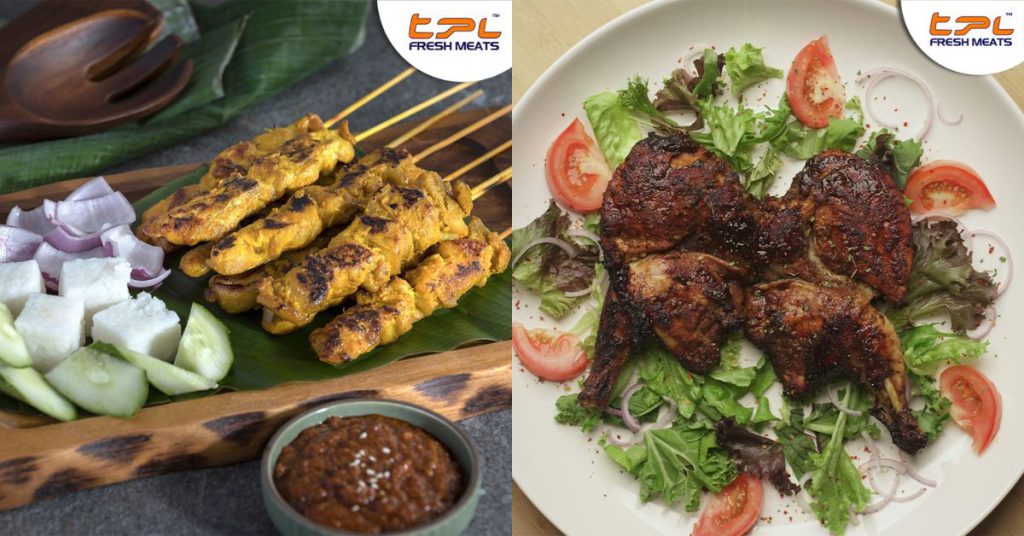
While F&B will be a new adventure for the team, they’re not taking their focus off their core offerings.
To keep their brand relevant and competitive, TPL aims to improve the packaging of their products, making them look more attractive.
As for the bigger picture, they want to open another store in Johor, given the demand they’ve noticed there.
But beyond self-owned locations, Kamal also brought up the possibility of offering franchising opportunities.
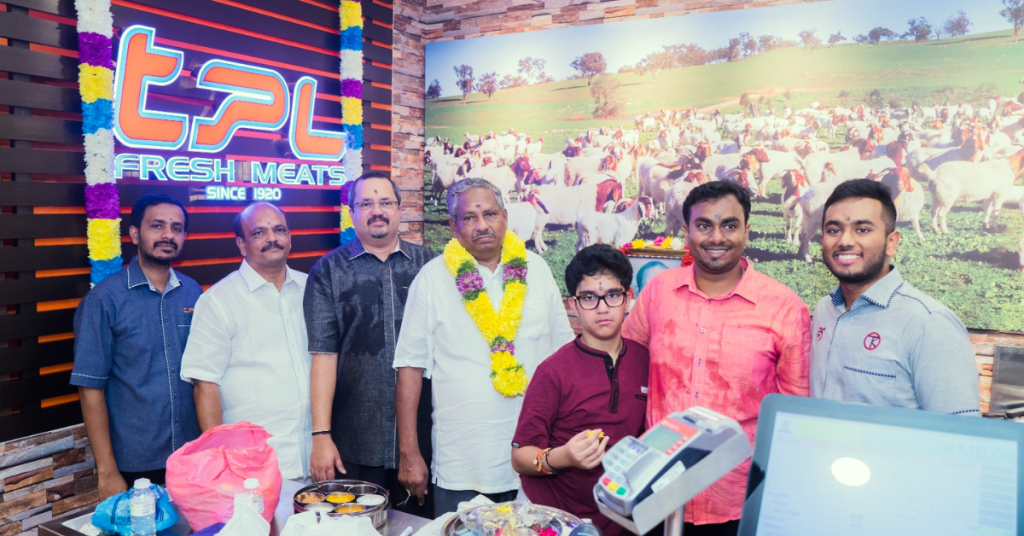
Till this day, the business has been kept within the family, with the current seven stores owned and operated by the three brothers. Aside from Kamal, his cousin brother is also involved as the fourth generation of TPL.
It’s impressive to see them not only continuing the legacy of their family business, but also continually adding to it, creating new offerings and solutions for their customers.
- Learn more about TPL Fresh Meats here.
- Read other articles we’ve written aout Malaysian startups here.
Also Read: The Tokyo govt wants to grow MY & SG startups in Japan, here’s how entrepreneurs can benefit
First impressions of the RM1,699 Samsung Galaxy A35 that has improved cameras & performance
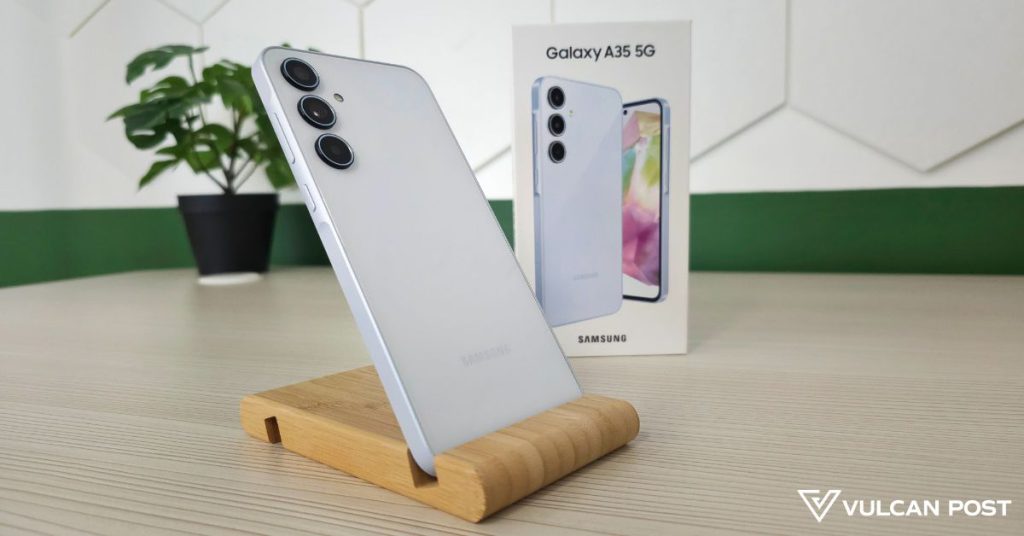
It’s been a while since I set my hands on an A Series phone from Samsung, but from what I remember, they’ve always been reliable and solid phones for their price points.
The Galaxy A35 has just launched in Malaysia, and right off the bat, I have to say the phone looks really nice. We have the IceBlue version, and if we didn’t know better, we would’ve said this was a flagship model.
It has a nice heft, and the back is kept nice and clean with the three camera lenses lined up in a vertical row on the top left.
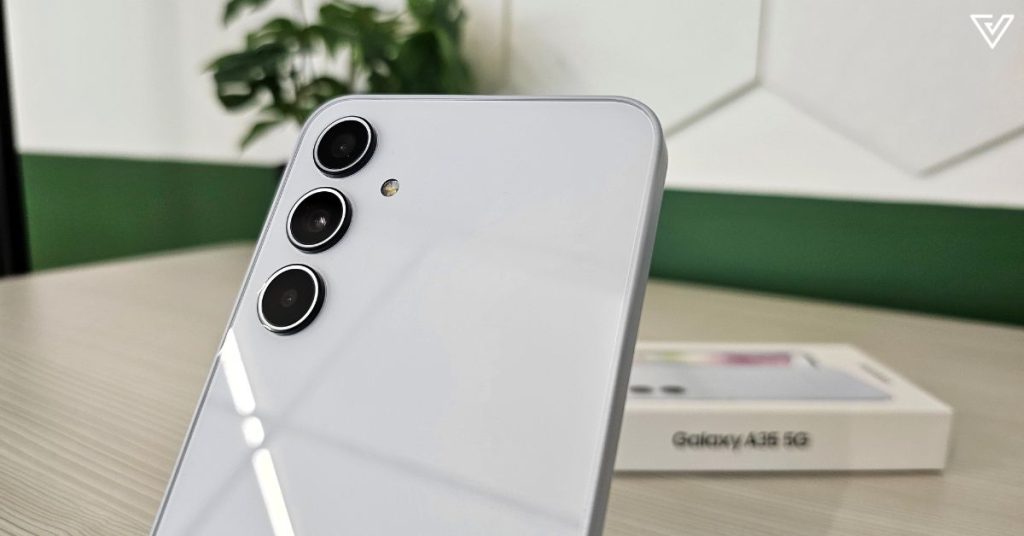
It’s not clear what glass is used on the back of the phone, but the front is Gorilla Glass Victus+, and the side panel with curved corners is made of plastic. The phone weighs 209g.
Looking good
The 6.6-inch Super AMOLED display has a 120Hz refresh rate and a peak brightness of 1,000 nits, along with Vision Booster to improve performance when directly under sunny skies.

There’s also an IP67 rating, which means it’s protected against dust and water, lasting up to 30 minutes in water of a 1-metre depth.
The A35 has an Exynos 1380 (5 nm) chipset. I downloaded Honkai: Star Rail, which is said to be quite a demanding mobile game, and it was able to play decently so far, with little screen tearing. I’ve yet to see how it handles sustained gaming sessions.
Battery life looks good too, the phone comes with a 5,00mAh battery, and I don’t think quick battery drainage will be an issue considering the specs.
Improved performance and security
For the cameras, you get a 50MP wide, 8MP ultrawide, 5MP macro, and a 13MP selfie camera.
They deliver sufficiently nice-looking photos, and Samsung says that the A35 has been equipped with enriched nightography for clearer photos in the dark too.

Something worth taking note of is also the fact that Samsung Knox Vault has appeared for the first time in the brand’s midrange phones through the A35 and A55.
To explain it simply, Knox Vault protects against hardware and software attacks by creating a secure execution environment that is physically isolated from the system’s main processor and memory.
This means that even if your phone is lost or stolen, your personal data like passwords, patterns, PINs, and biometric data will remain secured, according to Samsung.

Along with this, Samsung has also included other security features in the A35 such as:
- Auto Blocker, which blocks unknown apps, does app security checks, etc.
- Smart Call, to help you discern when unknown or unwanted numbers are calling
- Samsung Knox Matrix, which ensures that no one can access your cloud data without your registered device
- Secure Folder, a private, encrypted space on your phone for an added layer of security when storing sensitive data
All in all, Samsung has taken steps to ensure that the new A Series phones hold their own when it comes to daily use and modern security needs.
The recommended retail price for the A35 is RM1,699, and we’ll be doing a more in-depth review of the phone to see how it fares against its price point soon, so stay tuned.
Also Read: The Tokyo govt wants to grow MY & SG startups in Japan, here’s how entrepreneurs can benefit
Here’s how OCBC Business is making it easy for M’sian SMEs to offer cross-border QR payments
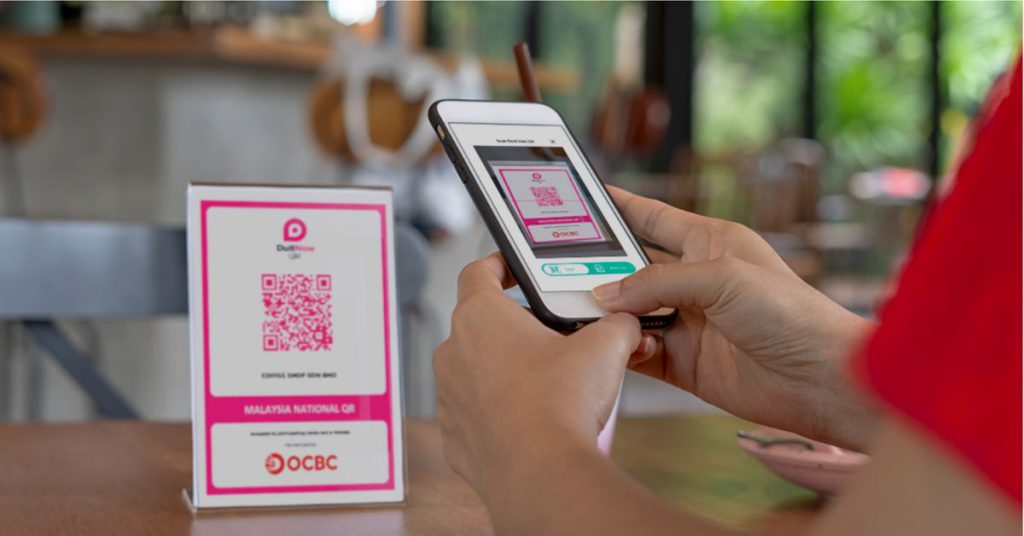
[This is a sponsored article with OCBC Business Banking.]
Enabling cashless payment options to customers is essential for businesses in the digital landscape.
This way, you can provide customers with convenience and speed in making payments for your products or services.
Furthermore, if your business is looking to deal with customers from across the causeway, the importance of offering digital payments is heightened.
Understanding such needs, OCBC has a way for its business banking users to ease the process via OCBC OneCollect.
Seamless and efficient transactions
OCBC OneCollect enables businesses to collect payments seamlessly through QR codes by incorporating Malaysia’s national payments QR, DuitNow QR to support Ringgit (MYR) collection.
Using the OCBC OneCollect app, you can set up a dedicated DuitNow QR code for your business, and display it for buyers to scan and pay via any banking app or ewallet of their choice.
DuitNow QR runs on a real-time transfer basis, meaning upon a customer’s transaction, you’ll receive these payments instantly. There’s no need to rent a dedicated terminal for payments, reducing the operations cost for your business. You’ll also be notified when payments are received at the point of sale.
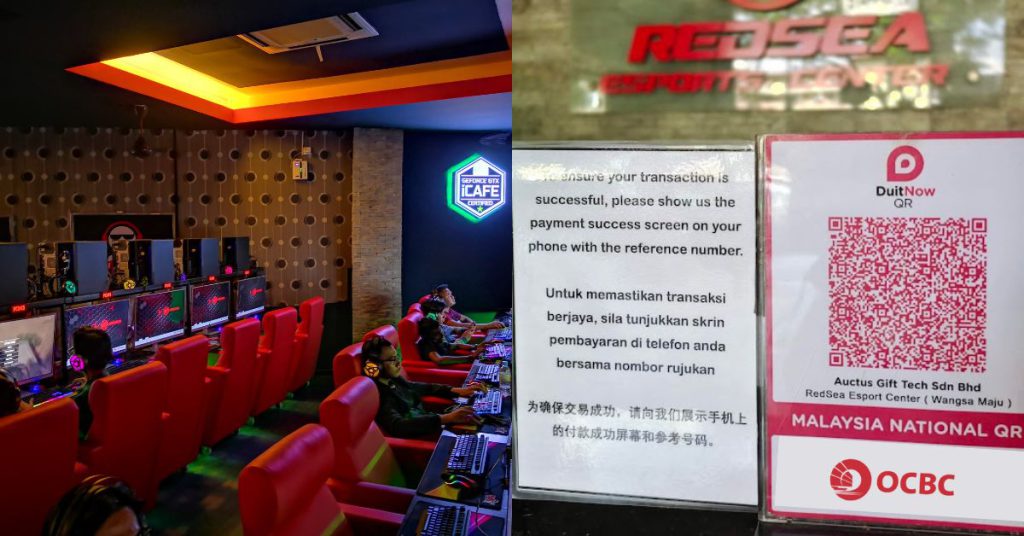
One local user of OCBC OneCollect is Redsea Esports Center, a cybercafe based in Wangsa Maju. Its business owners Tan Song Chun and Skeith Wong shared that they appreciate the speed, efficiency, and convenience of receiving payments via the QR payment solution.
They also reported that utilising OCBC OneCollect has been cost-effective for their business, as the bank does not charge transaction fees for the QR feature.
Receive payments from Singaporean customers
If your business deals with customers who are based in Singapore and transact with Singaporean Dollars (SGD), OCBC OneCollect has made it easy for you to transact with them as well.
OCBC OneCollect offers cross-border QR payments by integrating PayNow QR, which is Singapore’s version of DuitNow QR. To enable this function, you can generate a dynamic PayNow QR with a predefined transaction amount through the OCBC OneCollect app.
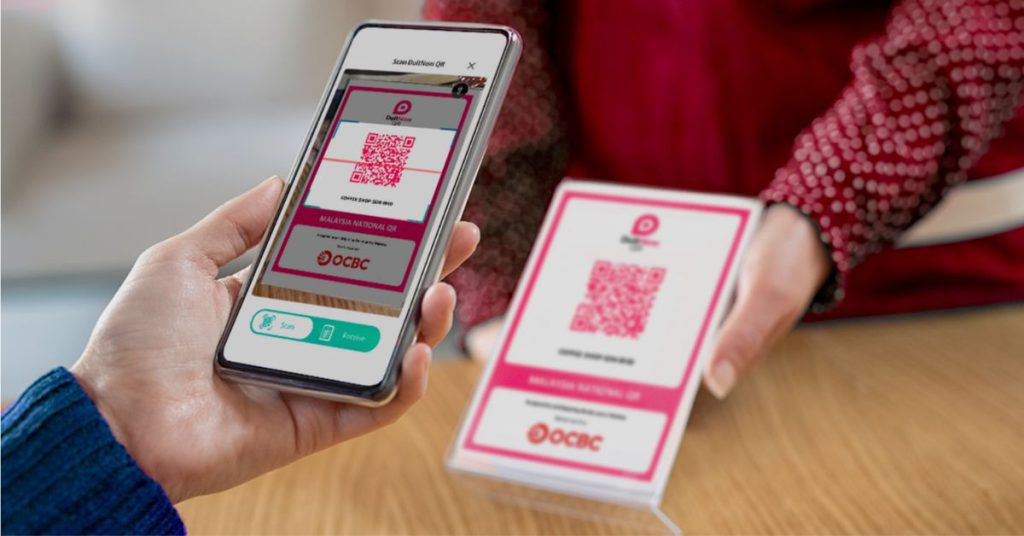
Upon scanning the PayNow QR, your customers will make payments in SGD while you receive the predefined amount in MYR.
For online businesses that don’t have a storefront, you can screenshot and share the dynamic PayNow QR code for your customers from Singapore to make payments. AM PM Pharmacy is a local user that uses this function from OCBC OneCollect to receive payments from their customers in Singapore.
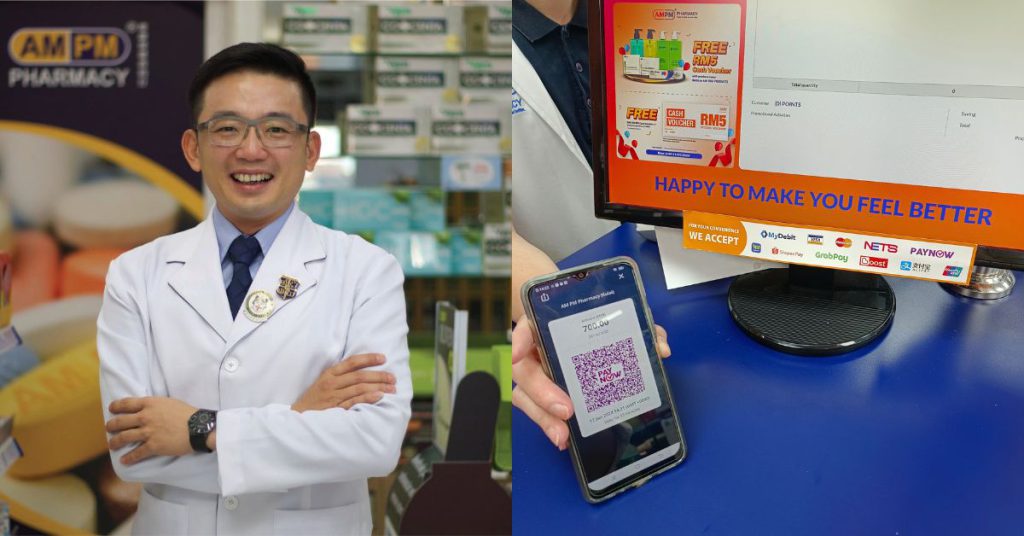
Previously, their Singaporean customers would have to withdraw cash to make payments at the pharmacy, which sometimes led customers to abandon their purchases. For online transactions, AM PM Pharmacy would also experience delays in payment collection as overseas transactions from banks can be time-consuming.
“Since we adopted OCBC’s PayNow service, it has helped us address this issue, as my team are only required to send a QR code to the customer for payment, and it takes less than five minutes for the overall process,” said Ng Kee Wei, CEO of AM PM Pharmacy.
OCBC OneCollect is the first platform to offer cross-border payments between Malaysia and Singapore since 2020, with the app receiving the Recognition of Excellence Award by OpenGov Asia in 2023. This was for helping SMEs use the channel to ease their collections.
In the same year, OCBC Malaysia also won the ‘Malaysia Customer Experience of the Year – Banking” by Asian Experience Awards 2023 and the “Malaysia’s Bank of the Year 2023” by The Banker of London, awards achieved by providing exemplary customer service.
Track your transactions in real-time
As highlighted above, DuitNow transfers happen in real-time, so you’ll receive your customers’ payments instantly and be notified via the OCBC OneCollect app.
The OCBC OneCollect app’s reporting function can also give you a clear view of your daily sales report to ease the reconciliation process, saving you the time which could be allocated to planning for your business.
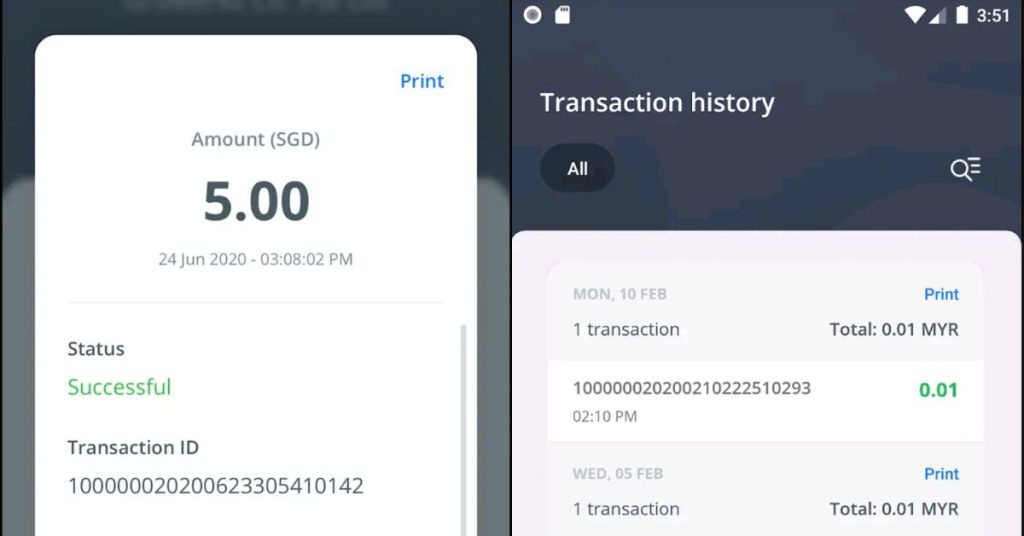
Furthermore, when consolidating your daily or monthly sales reports, OCBC OneCollect’s app seamlessly tracks your transactions and gives you an overview of them.
Redsea Esports Center praised this function in the app too, and shared, “OCBC OneCollect has notably improved our cash flow management and reduced transaction costs, contributing to an increase in overall revenue over approximately 3,500 transactions per month.”
AM PM Pharmacy shared the same sentiment, and expressed, “The user-friendly online banking interface and mobile app have provided quick access to the team on essential financial information and tools, contributing to efficient financial management.”
If you’re a serial entrepreneur managing multiple outlets, you can create different “Shops” in the OneCollect app.
These Shops can help you identify the transactions received by each of your businesses, keeping your business finances orderly.
Moreover, you can easily add your business partners or employees as users through the OCBC OneCollect app, and set up customised functions to meet your daily operational needs.
If you’re already an OCBC Business user and would like to start your digitalisation journey for your business by collecting payments through QR codes, you can download the OCBC OneCollect Malaysia app from the App Store and Google Play Store.
Meanwhile, if you’re newly starting your business and are keen to sign up for an OCBC eBiz Account, you’ll enjoy a 100% online application that comes with complimentary digital tools. They include OCBC OneCollect and OCBC Velocity, which are OCBC’s business banking portals containing useful business tools for you to run your business seamlessly.
- Learn more about OCBC OneCollect here, the OCBC eBiz account here, and OCBC Velocity here.
- Read more finance-related topics we’ve written here.
Also Read: The Tokyo govt wants to grow MY & SG startups in Japan, here’s how entrepreneurs can benefit
Featured Image Credit: OCBC
Bike-sharing firm SG Bike ceases operations in S’pore, users to be transferred to Anywheel

Homegrown bike-sharing firm SG Bike will be exiting the Singapore market on April 30 once its license expires due to a “strategic shift in business direction”.
From today (March 21), SG Bike will no longer accept new sign-ups, credit top-ups and purchases of passes, and its customer base will be ported over to Anywheel, one of the two remaining bike-sharing players in Singapore.
In the arrangement between the two companies, SG Bike users will be able to convert their existing wallet balance to the Anywheel platform, which will be reflected on the app by May 3 or earlier when they log on using the same registered mobile number.
According to Anywheel’s founder and CEO Htay Aung, this will allow SG Bike users to continue using bike-sharing services “without obstruction”.
Users who opt to convert their wallet balances between March 21 and April 21 will receive complimentary S$10 credits on top of their existing balance. The converted balances can be used only for rides.
Those who do not wish to join Anywheel can opt out by April 30 via the SG Bike app. However, there will be no refund issued for the remaining balance in their wallet.
SG Bike accumulated losses of S$7.4M in FY 2021/22

According to a spokesperson from SG Bike, the decision to exit the market was challenging. However, after “carefully reviewing its resources”, the company found itself unable to sustain the level of “quality experience” it had initially aimed to provide for its users.
We trust that our users will continue to enjoy a quality bike sharing experience with Anywheel and we express our most sincere gratitude to our users, Land Transport Authority, partners, and colleagues for the kind support and understanding of this decision.
We believe Anywheel will continue on our shared mission to grow bike sharing as a sustainable and accessible transportation, providing a convenient and green transport alternative for everyone in Singapore, and we wish them all the best.
– An SG Bike spokesperson on the bike-sharing firm’s exit
SG Bike made its debut in Singapore in August 2017 and grew to become the largest player in the market after taking over the now-defunct Mobike’s license to operate 25,000 bicycles in 2019. However, over a period of time, the inherited bicycles from Mobike were removed or scrapped for various reasons including vandalism, theft, damage, and old age.
Although new SG Bike bicycles were brought in, the firm eventually had to decrease its license size to align with market demand and operational requirements. By July 2023, its fleet size was down to 1,500 bicycles.
Furthermore, SG Bike had also been loss-making between its 2020 and 2022 financial years. Based on its most recent financial data, the company accumulated losses of S$7.4 million for the financial year ending June 30, 2022, following losses of S$5.5 million in the preceding year.
In December 2022, SG Bike’s previous previous parent company, ISOTeam, sold its entire 48 per cent stake in the firm to a fund managed by Atlas Asset Management.
Anywheel and HelloRide are only remaining bike-sharing players in Singapore
In 2017, Singapore started seeing a bike-sharing boom. Many Chinese firms emerged into the scene, before local players started joining the race.
At its peak, nine bike-sharing companies were operational in Singapore — oBike, ofo, Mobike, SG Bike, GBikes, ShareBikeSG, Baicycle, Anywheel and Moov Technology — offering a total of more than 200,000 shared bicycles.
However, the bike-sharing landscape quickly got ugly. Since these dockless bike-sharing services exploded onto the streets, indiscriminate parking and vandalism became rampant. It was equally as messy on the operators’ end — several companies made some dramatic exits, from bankruptcies to abandoned operations.
SG Bike’s departure leaves market leader Anywheel and Chinese firm HelloRide as the remaining two bike-sharing operators Singapore.
HelloRide entered the Singaporean market in July 2022 and secured a license in July 2023 to operate a fleet of up to 10,000 shared bicycles in the city-state until June 30, 2025.
Meanwhile, Anywheel, which received approval to operate up to 30,000 shared bicycles in June 2022 – the largest fleet approved since a licensing scheme started in 2018 – intends to get approval to increase its fleet size.
Even without the addition of users from SG Bike’s customer base, Anywheel’s Htay shared that the company needs to grow its fleet as ridership has been growing month on month for the past four years. As of February 2024, the bike-sharing platform boasts over 1.3 million users.
Anywheel will not take over SG Bike’s fleet of bicycles, which will be cleared off the streets for scrapping by the end of June.
Featured Image Credit: Anywheel
Also Read: South Korean convenience store chain Emart24 abruptly closes all 3 outlets in S’pore
Kids as young as 6 are learning with Apple Vision Pros at this S’porean school, here’s why
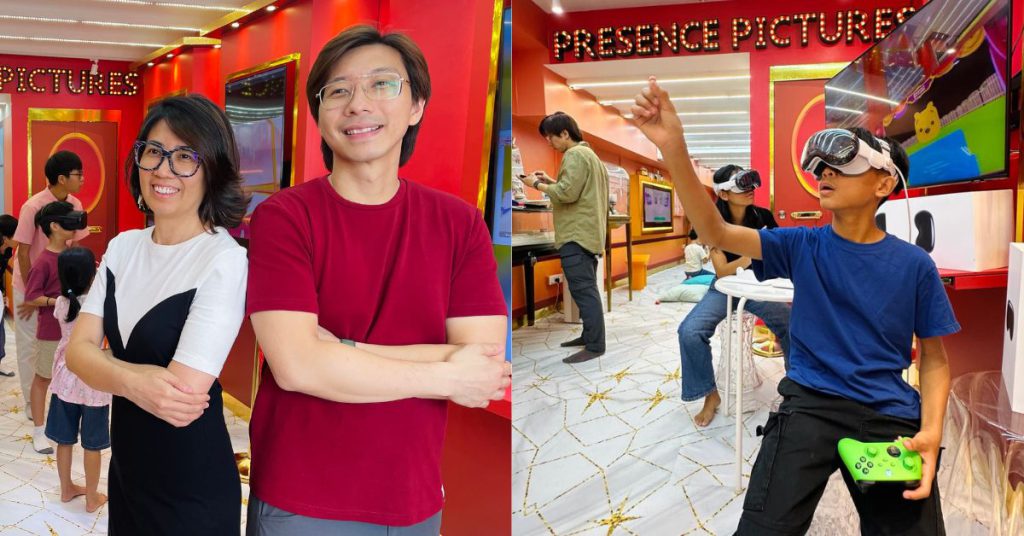
Back in February, Apple Vision Pro’s release had caused quite the stir in the industry, with many hyping up its purported ability to “blend digital content with your physical space”.
One business in Singapore that’s already leveraging this device is Presence Pictures, a coding school that specialises in augmented (AR) and virtual reality (VR).
From corporates to children
Established in 2013 by Edmund Lee and Eunice Lam, Presence began with building immersive VR experiences for Fortune 500 companies.
“During these various VR corporate projects and roadshows we embarked on, one vivid outcome that struck Eunice and me was that kids were the most excited audience,” Edmund shared with Vulcan Post.

However, despite their excitement, kids were amongst the last to come to mind as users of VR creation tools. As such, there weren’t any software that could help young kids easily up VR experiences.
“The lack of such software meant that children were relegated to the role of (only) a consumer of VR games, which to me and Edmund was a shame,” Eunice pointed out.
Noticing this gap, they took on the challenge to build a VR creation software for kids.
In 2016, the duo rejected corporate projects and professional teaching positions to prototype the Presence coding software. They even taught VR to little kids as young as 4 years old, understanding their learning needs to improve their software.

“What started off as a pipe dream is now a reality called Presence XR Coding,” they shared.
“Not only does Presence XR Coding simplify 3D design for little kids, our innovative software empowers our creators (AKA students) to code immersive virtual worlds that can be instantly output to extended reality (XR) modes like AR, VR, and mixed reality (MR) on iPhone and the Apple Vision Pro.”
Today, Presence Pictures has become a notable and innovative coding schools for children in Singapore, with a team of over 50 young creators, six mentors, and a user base of over 10,000 kids.
Jumping on the Apple bandwagon
Since the beginning of Presence Pictures, the founders have been teaching kids spatial thinking and how to code virtual worlds using their coding software. This can then be output to VR headsets such as Meta Quest, HTC VIVE, Google Cardboard, and now, the Apple Vision Pro.
But what’s so special about the Apple Vision Pro?

To this, Edmund shared that the Apple Vision Pro is a very advanced mixed-reality headset with impressive technology such as eye and hand-tracking capabilities with high quality displays and passthrough.
“The ability of Apple Pro Vision to blur the line between real and digital worlds is not just a tagline; it is a game-changer,” Edmund pointed out.
“Its mixed-reality operating system and 3D user interface enhance spatial mapping, thereby significantly improving not only the quality of AR display but also its immersive elements.”
With these features, Presence believes that the Apple Pro Vision can further enable students to familiarise themselves with the latest advancements in spatial computing, making coding education more dynamic and compelling.

“Our R&D process has been an eye-opening journey,” Edmund said about the process of integrating the gadget to their curriculum. “We are very lucky to be able to work with Apple’s developer team in Singapore. They gave us private access at their labs to the Apple Vision Pro way before their official launch in the US.”
The founders believe that the head start allowed them to better understand the use cases of Vision Pro and how they can integrate it successfully and seamlessly with their coding software and curriculum.
But is it safe for children?
A common concern that parents may have, though, is whether or not VR and AR is even safe for kids.
After all, research has shown negative associations between screen time and the development of physical and cognitive abilities.
And what about AR/VR wearables’ impact on a child’s physical health? Is it OK for a kid’s eyes to be so close to a screen? Well, it’s actually been determined that sitting close to a screen, such as a TV, won’t permanently damage one’s eyes, but it can cause eye strain.

In a ZDNET article, Dr Nathan Cheung, a paediatric optometrist at Duke University, said that the most immediate risk of VR headset use to a child is neck strain, rather than eye strain.
Plus, according to Apple itself, the Apple Vision Pro is designed to fit and be used by individuals 13 years of age and older, thus should not be used by children under 13.
Regarding the critiques, Edmund said that at this point, they have not seen research that concludes that donning headsets would have negative impact on children, at least compared to iPads, smartphones, or other types of screens.
And Presence doesn’t believe that shying away from it will effectively help kids in the long run in this digital era.
Rather, it would be more practical to teach kids to act responsibly with technology and to choose useful content to view during their screen time.
“Our curriculum is specifically designed to incorporate a mix of hands-on, offline activities that require body movements and meaningful interactions with their peers while on screen with immersive experiences,” Eunice pointed out. “This minimises the risk of monotony and excessive screen dependence.”
All in moderation
In any case, the team believes that the benefits of learning VR/AR coding outweighs associated cons.
They believe immersive technologies can make learning a truly engaging and integrated experience, catering to diverse learning styles of different children, whether visual, auditory, or kinesthetic.
They also believe that the immersive nature of VR and AR makes children feel fully integrated into the learning environment, fostering active participation instead of passive observation.
Children can create their own 3D virtual worlds, games, and stories, boosting spatial thinking, creativity, and storytelling capabilities.
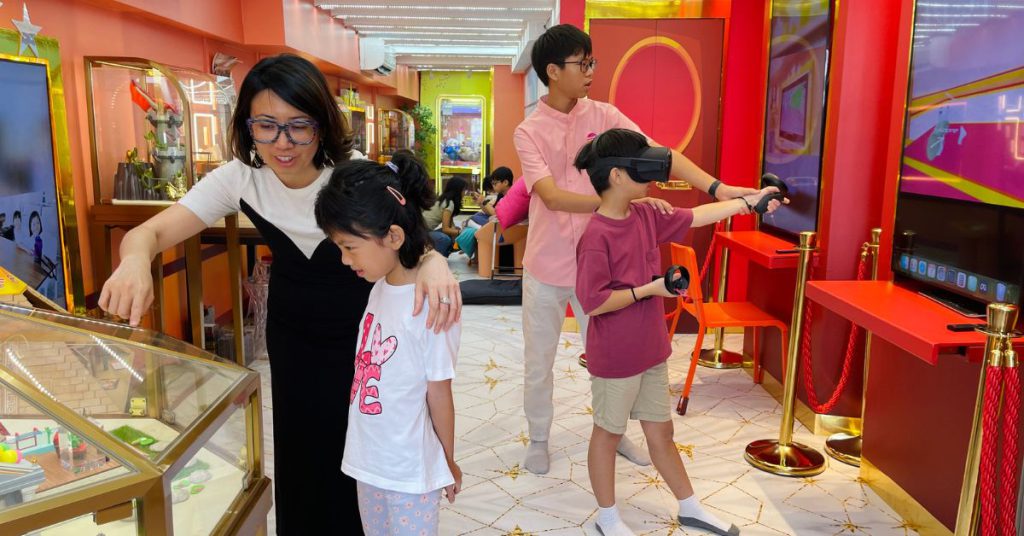
Eunice also shared that the school has seen a few entrepreneurial students, who are a part of their Start-Up Programme, turn their AR and VR games into sellable products using something called Presence Cards.
The truth is that the world is changing right in front of our eyes, and those who aren’t keeping up run the risk of being left behind.
Teaching children how to properly navigate and create AR/VR worlds of their own may serve to future-proof their education and open them up to more opportunities.
And Presence Pictures, which constantly updates its curriculum with the latest tech, is helping them do just that.
Also Read: The Tokyo govt wants to grow MY & SG startups in Japan, here’s how entrepreneurs can benefit
Featured Image Credit: Presence Pictures
These ex-bankers quit the corporate life for baking, now their Shah Alam bakery is turning 10

Nestled in a cosy neighbourhood facing rows of old terrace houses in Seksyen 4 is Cake Jalan Tiung. A rather hidden gem, this decade-old bakery cafe has made its name in the Shah Alam food scene as a go-to place for delightful cakes.
Most notable is its Salted Caramel and Chocolate cake that’s a fan favourite and house signature. A simple treat, but this cake holds the history of Cake Jalan Tiung in each bite.
It’s been a part of their offerings since the brand first started as a home-based business in 2014.
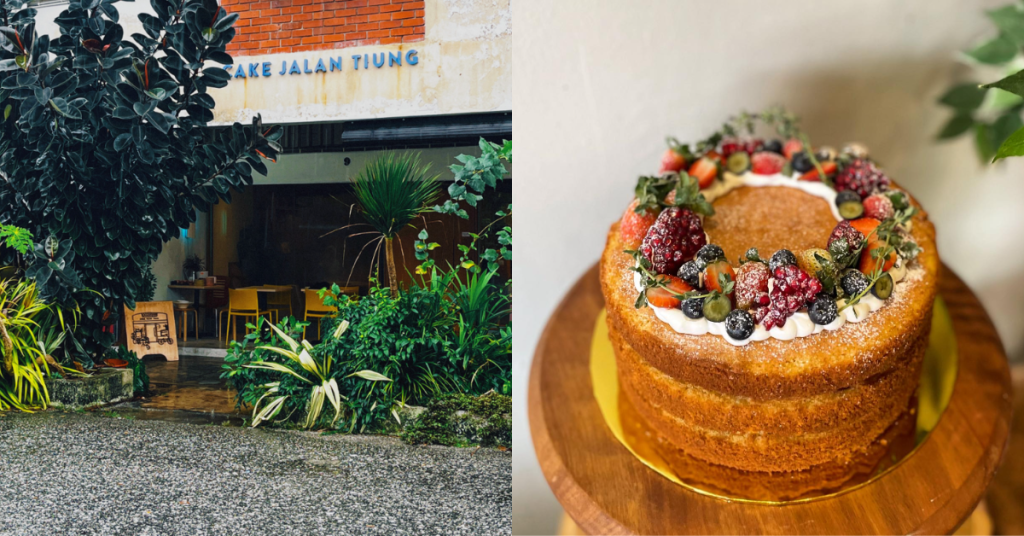
Back then, Shafinaz would frequently bake for family and friends. It was a hobby she learnt from her mother as a child and nurtured even after joining the workforce, and getting married to Hidzad.
Then this hobby turned into a part-time venture, with Shafinaz baking cakes for customers outside of her day job. Customers would order a few days in advance and then pick up the treats when ready.
It wasn’t really in Shafinaz and Hidzad’s plans to scale it up into a full-fledged business. But their small taste of entrepreneurship led to bigger life epiphanies.

“I think after working in banking over some time, we gradually came to the realisation that the money was good but it wasn’t something we particularly enjoyed doing and would want to do for the rest of our working lives if we had the choice,” the couple shared.
“We started to lose motivation to keep doing the things required to continuously climb the corporate ladder for the benefit of a large company.”
So they decided to give the baking venture a real shot by opening their first outlet in a 900 sq ft shop lot in Seksyen 9.
It went from a year to ten

Shafinaz and Hidzad quit their banking careers and initially decided to give their business a go for a year. Only afterwards would they decide to continue, or go back into the corporate world.
But they haven’t looked back since.
It seemed like a good idea to them at the time as it combined both of their interests and skills. Shafinaz with baking, and Hidzad with his appreciation for cafe culture, having worked at a few cafes on weekends before this.

Cake Jalan Tiung began as a bakery cafe, with a focus on cakes and smaller baked goods like cookies, brownies, and coffee. And ideally, that’s how they would have liked it to remain.
However, as time progressed, it became increasingly difficult to keep up with the rising cost of ingredients. “We might be earning the same or a bit more but it wasn’t enough to keep up. We needed new items on the menu to increase our revenue,” Shafinaz shared.
So Cake Jalan Tiung expanded its offerings to include a savoury menu.

When you visit the bakery cafe now, you can find hot meals such as Egg and Dendeng Croissant that’s made with homemade spicy dendeng.
Much to their surprise, Cake Jalan Tiung became quite a hit with the locals in the area. So much so that they eventually had trouble accommodating the crowds of guests.
That’s when they knew it was time to expand the brand by opening a new outlet.
Adapting to market trends
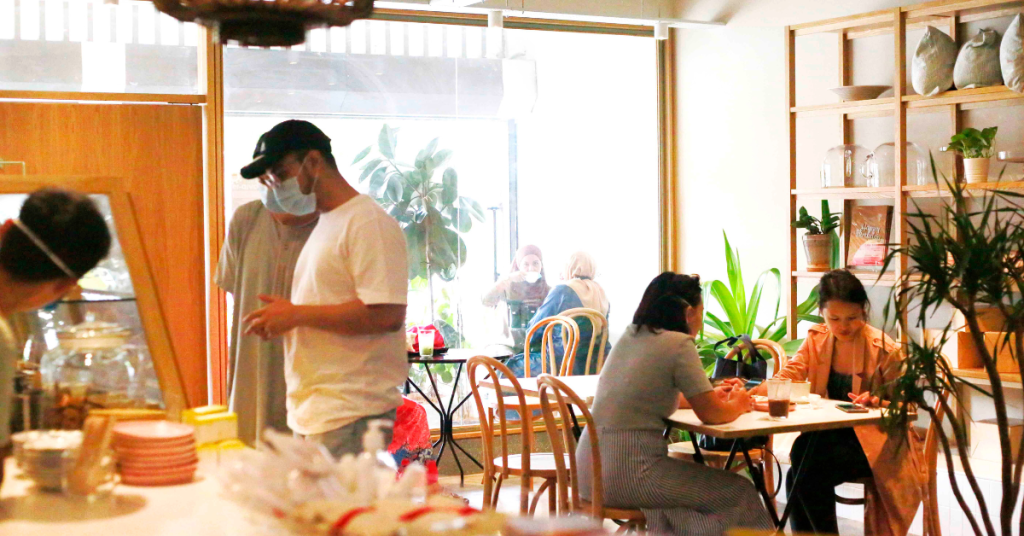
The second Cake Jalan Tiung store opened in 2020 in Seksyen 4.
Being on the ground floor helped bring in traffic from customers since it’s more visible and OKU-friendly.
Over time, its first outlet became less feasible and sales stagnated. There wasn’t enough parking for customers as many of the spots were taken up by food trucks. And the team found customers were more reluctant to take the stairs up to their first-floor Seksyen 9 store.

Hence, they made the financially strategic move of closing it down to focus fully on the newer and bigger place.
Delivery also became a bigger part of the business and customers wanted a bit of everything from one space alone—a place where you can have a meal, sip on coffee, and enjoy a good dessert.
This is why for Ramadan this year, they’re offering traditional Malay moreh dishes like lempeng and bubur candil sumsum alongside the usual cakes.

At the same time, Shafinaz and Hidzad had to focus more efforts on marketing the brand.
“I think it’s much tougher to grow a brand on these platforms organically as potential customer reach seems to be limited,” they shared. Not to mention that the social media algorithm constantly changes.
Now the millennials are following the steps of many others by joining the TikTok space to spread word of their cafe.
Teamwork makes the dream work

In the 10 years of running Cake Jalan Tiung, both co-founders have picked up quite a number of lessons along the way. One of the biggest is that a good team is made up of people with good character.
“Almost all the skills needed to do a job here can be taught. We have had quite a number of people who had never baked professionally or had an education in it, and do very well working as part of the team,” they shared.
What actually matters is their attitude towards learning and how they adapt to function well in a group.

As for growth, Shafinaz shared that they’ve been exploring other locations to expand Cake Jalan Tiung. But each time they would end up not going through with it.
“I think deep in our hearts our motivation has always been to run a simple artisanal bakery cafe. This concept runs through in the choice of location, the ambience, and community around it,” she stated.
They do hope to someday open an out-of-state outlet, preferably in a smaller city such as Kuantan.
But even if not, the couple are content with this “small bakery” that has allowed them to follow the lifestyle they sought after.

- Learn more about Cake Jalan Tiung here.
- Read other articles we’ve written about Malaysian startups here.
Also Read: The Tokyo govt wants to grow MY & SG startups in Japan, here’s how entrepreneurs can benefit
Featured Image Credit: Cake Jalan Tiung

